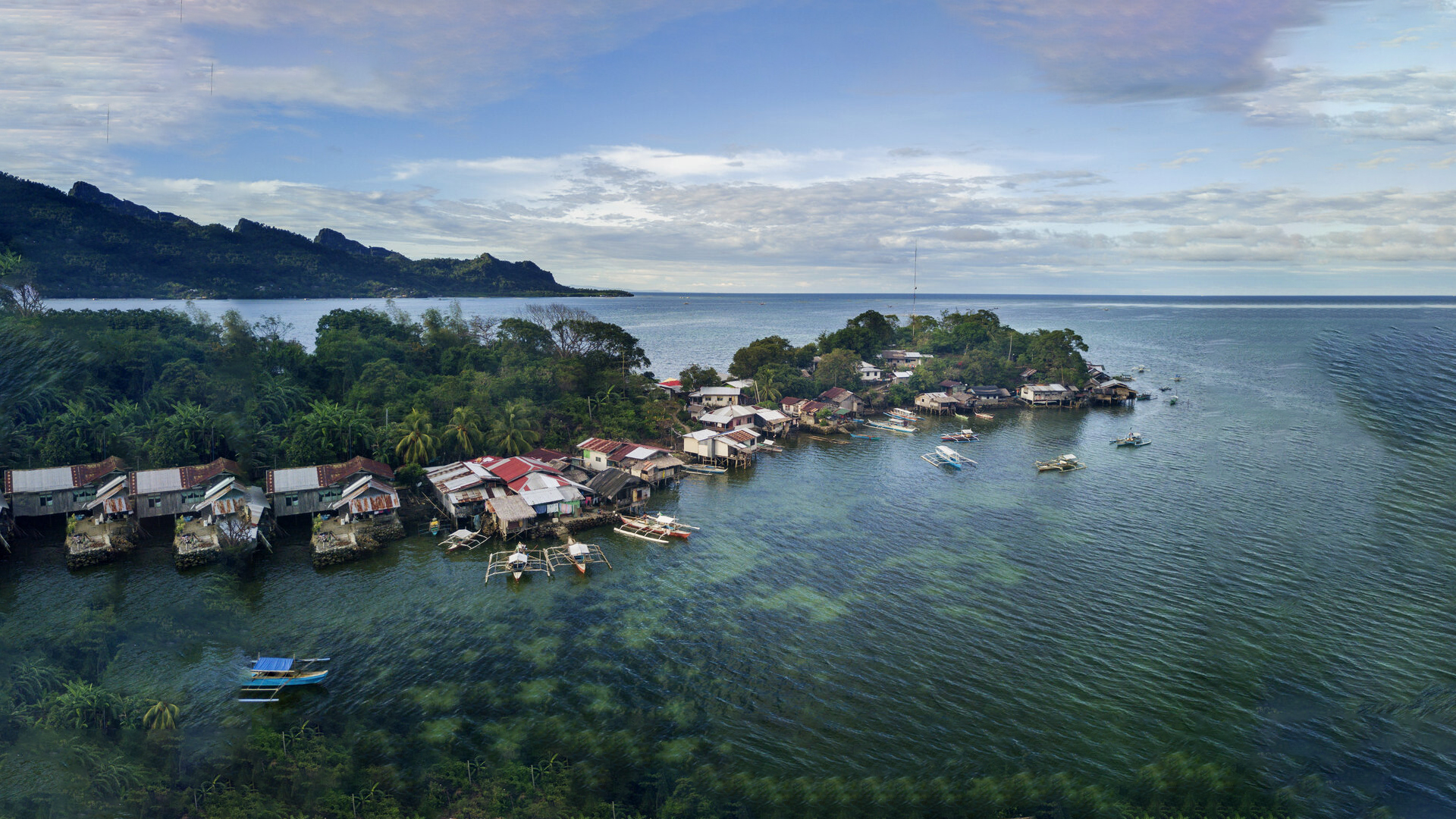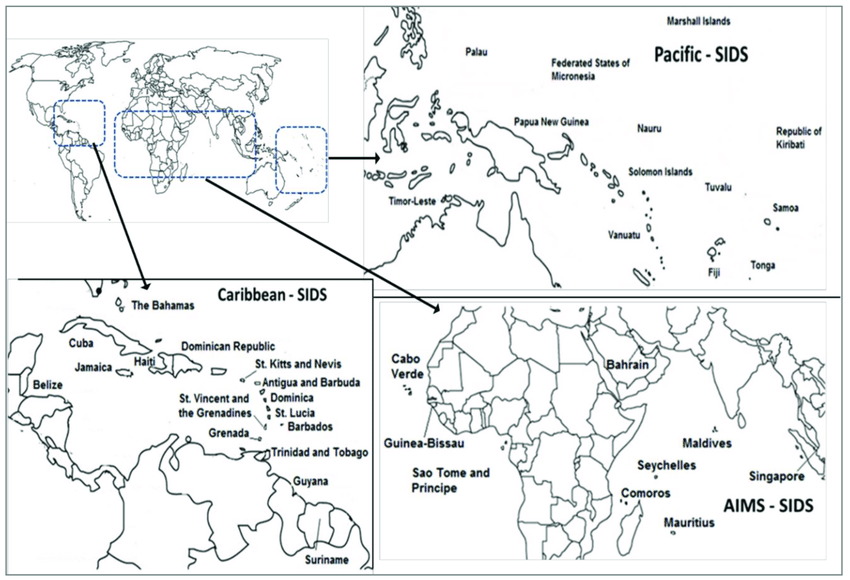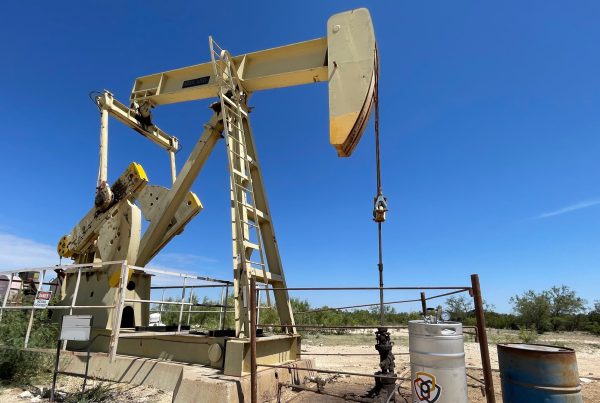Exploring the Potential of Hydrogen Energy in Driving Resilience and Growth in SIDS
The Urgent Need for Sustainable Energy in SIDS
Small Island Developing States (SIDS) are among the most vulnerable regions to the impacts of climate change and energy insecurity. Scattered across the Caribbean, the Pacific, the Atlantic, and the Indian Ocean, these islands face unique challenges due to their geographic isolation, limited natural resources, and high susceptibility to environmental disasters. For decades, SIDS have relied heavily on imported fossil fuels to meet their energy needs, leading to high energy costs, economic vulnerability, and significant carbon emissions.
The urgency for SIDS to transition to sustainable energy sources cannot be overstated. Rising sea levels, increased frequency and intensity of hurricanes, and other climate-related events are exacerbating the already precarious situation. The high dependency on imported fossil fuels not only strains the economies of these islands but also hinders their efforts towards achieving energy security and sustainability. According to the International Renewable Energy Agency (IRENA), SIDS spend an average of 7-20% of their GDP on fossil fuel imports, making them highly susceptible to global oil price fluctuations.
In addition to economic vulnerabilities, the environmental impact of continued fossil fuel use is profound. The carbon footprint of SIDS, while relatively small on a global scale, is disproportionately high relative to their size and population. The transition to renewable energy sources is, therefore, a critical step towards mitigating climate change, protecting their fragile ecosystems, and fostering sustainable development.
Hydrogen, as a clean and versatile energy carrier, presents a promising solution to the energy challenges faced by SIDS. With the potential to be produced from renewable resources such as solar and wind, hydrogen can significantly reduce carbon emissions and enhance energy security. This article delves into the potential of hydrogen as a sustainable energy source for SIDS, exploring its benefits, technological considerations, and the roadmap for implementation.
Overview of Hydrogen as a Renewable Energy Source
Hydrogen is the most abundant element in the universe, and its potential as a renewable energy source has gained significant attention in recent years. As a clean energy carrier, hydrogen can be produced from various resources, including water, natural gas, biomass, and renewable electricity. The versatility of hydrogen allows it to be used in multiple applications, from power generation and transportation to industrial processes and energy storage.
The production of hydrogen can be categorized into three primary methods based on the source and process: green hydrogen, blue hydrogen, and grey hydrogen. Green hydrogen is produced through the electrolysis of water using renewable electricity, resulting in zero carbon emissions. Blue hydrogen is derived from natural gas with carbon capture and storage (CCS) technology to mitigate emissions. Grey hydrogen, the most common form currently, is produced from natural gas without any emission mitigation measures, making it less environmentally friendly.
The electrolysis process, which splits water into hydrogen and oxygen using an electric current, is at the forefront of green hydrogen production. This method is particularly appealing for SIDS, given their abundant renewable energy resources. By harnessing solar, wind, and hydropower, SIDS can produce green hydrogen locally, reducing their dependency on imported fossil fuels and enhancing their energy resilience.
In terms of energy storage and transportation, hydrogen offers several advantages. It can be stored in compressed gas form, as a liquid, or in metal hydrides, providing flexibility in energy management. Hydrogen can also be transported through pipelines or in specially designed containers, facilitating its integration into existing energy infrastructure.
Hydrogen fuel cells, which convert hydrogen and oxygen into electricity, water, and heat, are another critical technology in the hydrogen energy ecosystem. Fuel cells offer high efficiency and zero emissions, making them ideal for various applications, including power generation, transportation, and backup power systems. For SIDS, fuel cell technology can play a pivotal role in decentralizing energy production, enhancing grid stability, and providing reliable power in remote areas.
The global hydrogen market is rapidly expanding, with significant investments and policy support driving its development. According to the Hydrogen Council, the global hydrogen economy could generate $2.5 trillion in revenue and create 30 million jobs by 2050. For SIDS, tapping into the hydrogen economy presents an opportunity to not only achieve energy sustainability but also stimulate economic growth and create employment opportunities.
The Economic and Environmental Benefits of Hydrogen for SIDS
The adoption of hydrogen as a renewable energy source offers numerous economic and environmental benefits for SIDS. By shifting away from fossil fuels, these islands can significantly reduce their carbon emissions, contributing to global climate change mitigation efforts. The use of green hydrogen, in particular, aligns with the sustainable development goals (SDGs), promoting clean energy, economic growth, and environmental protection.
Economically, hydrogen can help SIDS reduce their energy costs and enhance energy security. The high cost of importing fossil fuels is a significant burden for many SIDS, affecting their trade balance and economic stability. By investing in local hydrogen production using renewable resources, SIDS can lower their energy expenses and redirect funds towards other critical areas such as healthcare, education, and infrastructure development.
Moreover, the hydrogen industry can create new economic opportunities and jobs in SIDS. The development of hydrogen production facilities, fuel cell manufacturing, and related infrastructure projects can stimulate local economies and provide employment for local communities. According to a report by the International Energy Agency (IEA), the hydrogen sector could create up to 5.4 million jobs globally by 2050, with a significant share in renewable energy-rich regions like SIDS.
From an environmental perspective, hydrogen offers a clean alternative to fossil fuels, reducing greenhouse gas emissions and air pollution. The use of green hydrogen, in particular, produces no carbon emissions, making it an environmentally sustainable energy source. This transition can help SIDS preserve their natural habitats, protect biodiversity, and enhance their resilience to climate change.
Technological and Infrastructural Considerations
The transition to hydrogen energy in SIDS requires careful planning and investment in technological and infrastructural development. Key considerations include the establishment of hydrogen production facilities, the development of storage and transportation infrastructure, and the deployment of hydrogen fuel cells.
Hydrogen production facilities, particularly those utilizing electrolysis with renewable energy, are essential for the local production of green hydrogen. SIDS can leverage their abundant solar, wind, and hydropower resources to establish these facilities, ensuring a sustainable and reliable hydrogen supply. Investments in advanced electrolysis technologies can enhance efficiency and reduce production costs, making hydrogen a viable energy source for SIDS.
Storage and transportation infrastructure is another critical component of the hydrogen energy ecosystem. Hydrogen can be stored in various forms, including compressed gas, liquid, and metal hydrides, each with its advantages and challenges. Developing appropriate storage solutions is essential for ensuring a stable and continuous hydrogen supply, especially during periods of high demand or low renewable energy generation.
Transportation infrastructure, such as pipelines and specialized containers, is necessary for distributing hydrogen across SIDS. Given the geographic dispersion of many SIDS, the development of efficient and cost-effective transportation methods is crucial for integrating hydrogen into the energy mix. Innovations in hydrogen transportation, such as liquid organic hydrogen carriers (LOHCs) and ammonia, can enhance the feasibility of hydrogen distribution in SIDS.
Hydrogen fuel cells, which convert hydrogen into electricity with high efficiency and zero emissions, are a key technology for various applications in SIDS. Fuel cells can be used for power generation, transportation, and backup power systems, providing a versatile and sustainable energy solution. Deploying fuel cell technology can help SIDS decentralize their energy production, enhance grid stability, and provide reliable power in remote and underserved areas.
The Roadmap for Implementation
The successful integration of hydrogen energy in SIDS requires a comprehensive roadmap that encompasses strategic planning, stakeholder engagement, and phased implementation. Key steps in this roadmap include:
- Strategic Planning and Goal Setting: SIDS need to develop clear strategies and goals for hydrogen energy adoption, aligning with their national energy policies and sustainable development objectives. This involves conducting feasibility studies, identifying suitable sites for hydrogen production facilities, and setting targets for hydrogen integration.
- Stakeholder Engagement and Community Involvement: Engaging stakeholders, including government agencies, private sector players, and local communities, is crucial for the successful implementation of hydrogen projects. Collaboration and partnerships can facilitate knowledge sharing, mobilize resources, and ensure community buy-in.
- Investment and Funding: Securing investment and funding is essential for the development of hydrogen infrastructure and technology. SIDS can explore various funding sources, including international grants, development finance, and private sector investments. Innovative financial models, such as public-private partnerships (PPPs) and green bonds, can also support hydrogen projects.
- Policy and Regulatory Frameworks: Establishing supportive policies and regulatory frameworks is critical for creating an enabling environment for hydrogen energy. This includes setting standards for hydrogen production and use, providing incentives for renewable energy investments, and ensuring regulatory certainty for investors.
- Phased Implementation: A phased approach to hydrogen integration can help SIDS manage risks and build capacity. Initial phases can focus on pilot projects and demonstration plants to test technologies and gather data. Subsequent phases can involve scaling up production, expanding infrastructure, and integrating hydrogen into various sectors.
- Capacity Building and Training: Developing local expertise and skills is essential for the sustainable adoption of hydrogen energy. SIDS can invest in training programs, technical education, and research initiatives to build a knowledgeable workforce capable of supporting the hydrogen economy.
- Monitoring and Evaluation: Regular monitoring and evaluation are necessary to assess progress, identify challenges, and make necessary adjustments. SIDS can establish monitoring frameworks and performance indicators to track the impact of hydrogen projects on energy security, economic development, and environmental sustainability.
Hydrogen presents a promising solution to the energy challenges faced by Small Island Developing States. By harnessing their abundant renewable resources to produce green hydrogen, SIDS can enhance energy security, reduce carbon emissions, and stimulate economic growth. The transition to hydrogen energy requires strategic planning, investment, and collaboration, but the potential benefits make it a worthwhile endeavour. As SIDS navigate the complexities of the energy transition, hydrogen stands out as a beacon of hope for a sustainable and resilient future.
The Current Energy Landscape of SIDS
Energy Consumption Patterns and Challenges
Energy consumption in SIDS is largely driven by three primary sectors: residential, commercial, and transport. According to the International Renewable Energy Agency (IRENA), the residential sector accounts for approximately 40-50% of total energy consumption in most SIDS, followed by the commercial sector at 20-30%, and transport making up the remainder. This distribution reflects the typical energy needs of island communities, where domestic energy use and tourism-related activities are predominant.
One of the main challenges faced by SIDS is their heavy reliance on fossil fuels to meet their energy demands. This dependency results in high energy costs, economic vulnerability, and significant carbon emissions. The limited availability of indigenous energy resources forces SIDS to import almost all their energy supplies, primarily in the form of diesel and other petroleum products. The high costs associated with importing and transporting these fuels are further exacerbated by the small scale of their markets, lack of economies of scale, and volatile global oil prices.
The challenges of high energy costs and economic vulnerability are compounded by the environmental impacts of fossil fuel consumption. The carbon emissions from diesel and other petroleum products contribute to climate change, which poses a significant threat to SIDS. Rising sea levels, increased frequency of extreme weather events, and coral reef degradation are just a few of the climate-related impacts that SIDS are already experiencing.
Dependence on Imported Fossil Fuels
A case in point is the Caribbean region, where many SIDS import over 90% of their energy needs. According to the Caribbean Development Bank (CDB), fuel imports account for a significant portion of total import bills, ranging from 10% to 50% of GDP in some countries. This heavy financial burden diverts resources away from other critical areas such as healthcare, education, and infrastructure development.
One of the main challenges faced by SIDS is their heavy reliance on fossil fuels to meet their energy demands. This dependency results in high energy costs, economic vulnerability, and significant carbon emissions. The limited availability of indigenous energy resources forces SIDS to import almost all their energy supplies, primarily in the form of diesel and other petroleum products. The high costs associated with importing and transporting these fuels are further exacerbated by the small scale of their markets, lack of economies of scale, and volatile global oil prices.
The challenges of high energy costs and economic vulnerability are compounded by the environmental impacts of fossil fuel consumption. The carbon emissions from diesel and other petroleum products contribute to climate change, which poses a significant threat to SIDS. Rising sea levels, increased frequency of extreme weather events, and coral reef degradation are just a few of the climate-related impacts that SIDS are already experiencing.







